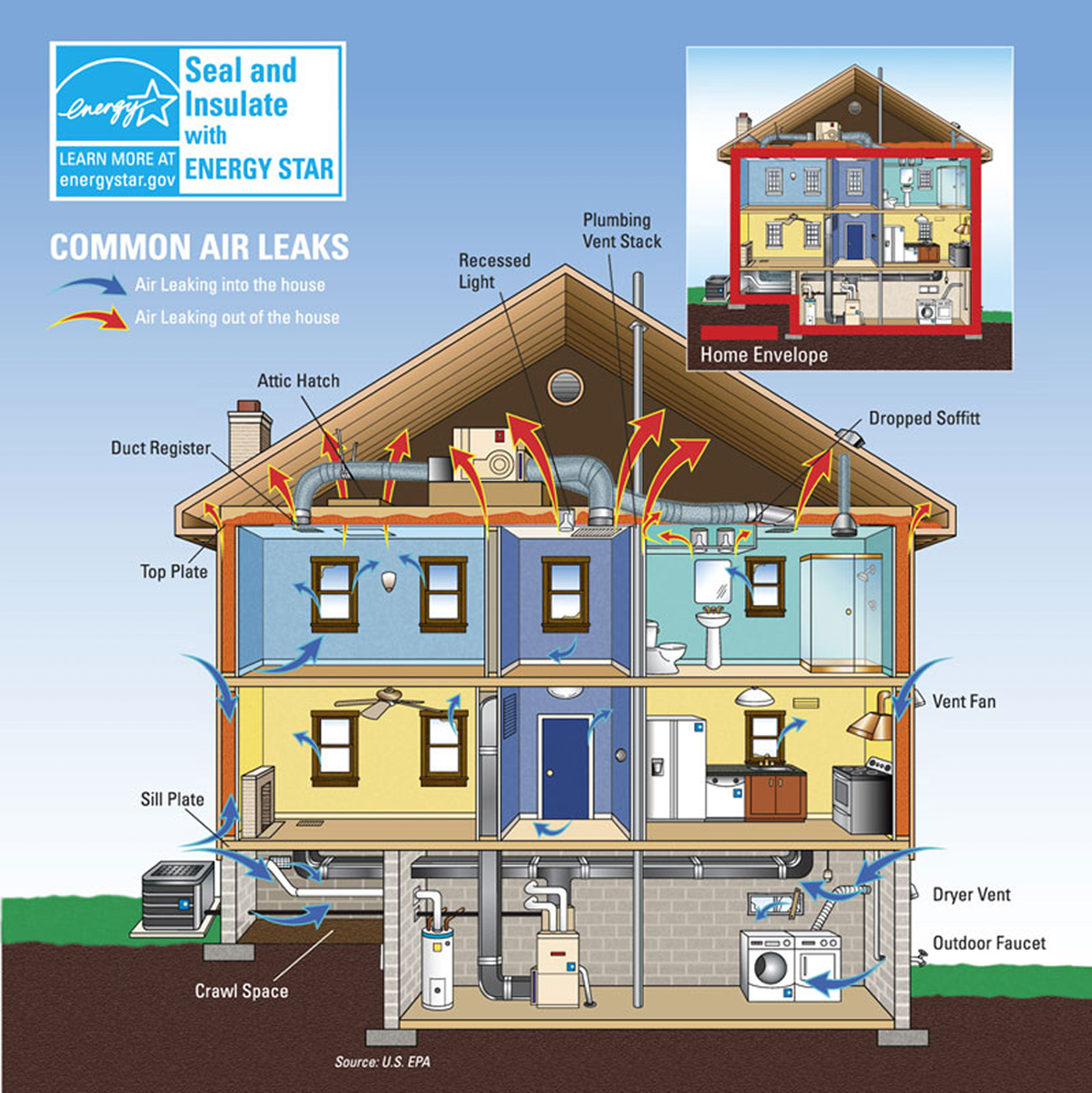The leaky house gets the seal

I love my older home, but it’s drafty and uncomfortable at times. What can I do to reduce drafts that won’t cost a lot?—Cris
This is a common problem, particularly in older homes. In many homes, about half of the conditioned air escapes to the outside every hour. The good news, especially if you don’t want to spend a lot of money or if you’re hesitant to invite contractors into your home right now, is that you can seal air leaks on your own with a little time and effort.
Here are some steps to get started, but also consider researching trusted websites for additional tips and tutorials, including a comprehensive list from Kentucky Living here and Energy.gov (search “do-it-yourself energy audits”).

First, find the leaks
The first step is a thorough visual search of the interior and exterior of the home. Look for gaps and holes in exterior walls, flooring and the ceiling. Likely leaky places are where different building materials meet, such as the top of cement foundation walls or around windows and doors. Another common source of air leaks is where pipes or wiring penetrate a wall, floor or ceiling. Ductwork in unheated crawl spaces or attics also can con-tain air leaks.
Check exterior doors and win-dows that open. The easiest way is to open each door or window and place a dollar bill between the door or window sash and the frame. If you can pull out the bill easily when the door or window is closed again, the seal is not tight enough.
Also, a window that rattles when it’s closed or when it’s windy probably isn’t sealed sufficiently. Sometimes you can see the leak; othertimes you will need to investigate.
Gather the materials
Here’s a quick list of materials to get you started after you pinpoint the leaks:
Caulk: You’ll need a caulk gun ($4-plus) and caulk ($4 to $10). Recommended: indoor/outdoor waterproof silicone or latex caulk that is water soluble until it cures and is paintable when dry.
Expanding spray foam: One can typically costs $4 to $6. It’s effective at plugging leaks, but a messy job.
Weather stripping: Prices vary depending on type and length of the materials, but the options include vinyl, metal and felt, or open-cell foam that works for most situations.
Pre-cut foam socket sealers: A pack of 24 sealers is about $3.
Chimney plug balloon: Prices range from $50 to $90. You may need a chimney plug balloon if your chimney flue doesn’t seal well. Buy a square or round one to match the shape of your chimney flue.
Adhesive plastic window insula-tion sheets: The cost ranges from $2 to $14 depending on size. You may need insulation sheets later in the year for windows that can’t be sealed and don’t have storm windows.

Getting more help—including pros
If you aren’t familiar with how to apply any of these materials, watch some online tutorial videos. But if you’re having trouble finding the air leaks at the start of the process, the best way to find them is to hire an energy auditor to do a blower door test. The blower door is a large fan that is mounted in a doorway to depressurize the house. The auditor can then find the leaks and may even be able to recommend ways to seal them.
It’s also possible to conduct your own whole-home pressure test. The U.S. Department of Energy provides detailed instructions at www.energy. gov; enter “Detecting air leaks” in the search box.
PAT KEEGAN AND BRAD THIESSEN write on energy efficiency for the National Rural Electric Cooperative Association.

